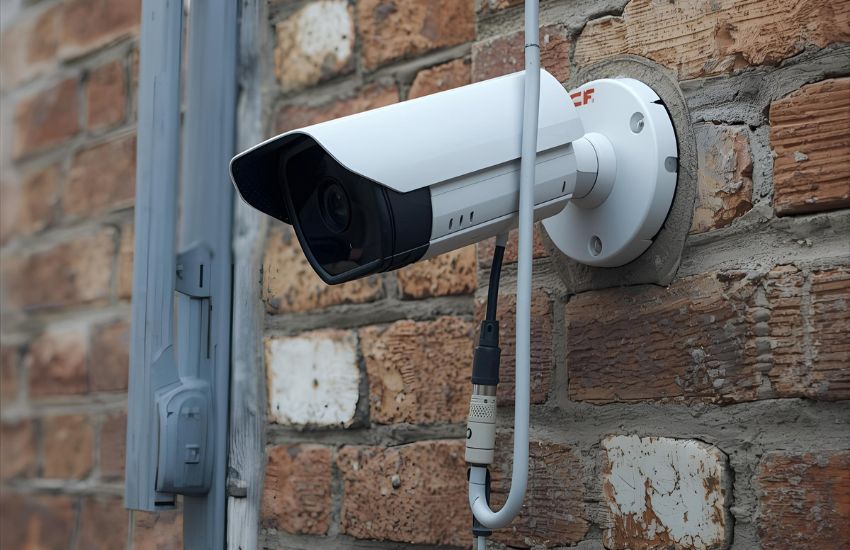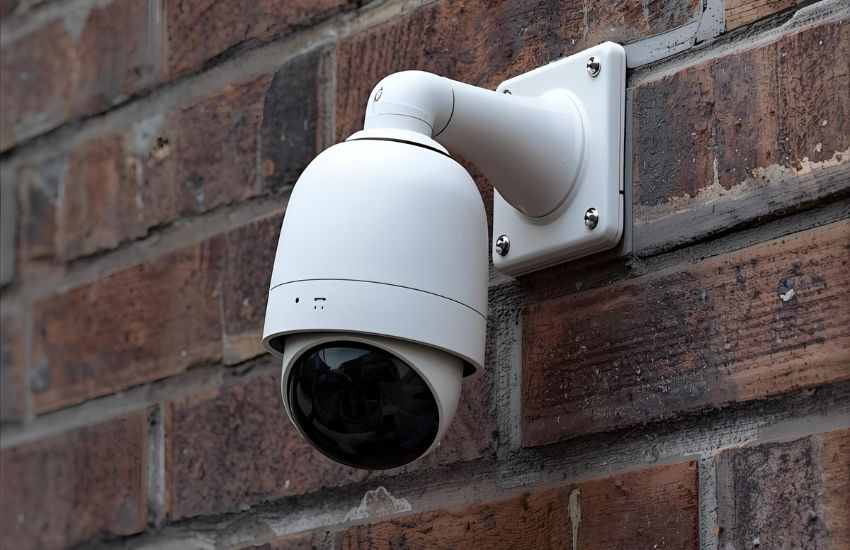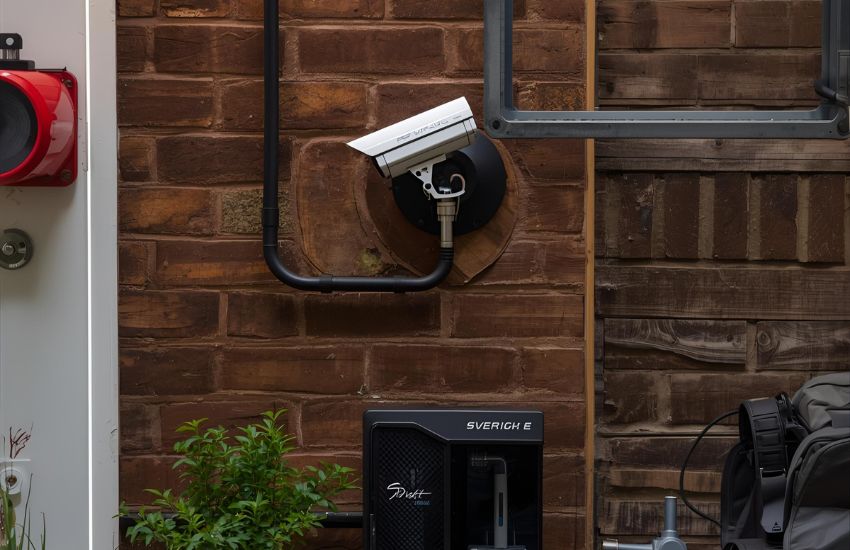Alarm outputs play a crucial role in optimizing your security setup by providing an effective way to trigger external devices such as sirens, lights, and cameras. When properly connected and configured, the alarm output can activate these devices instantly upon detecting suspicious activity, enhancing the overall responsiveness of your security system. Utilizing relays and wiring through designated terminals ensures that your alarm output functions reliably, maintaining continuous protection under various conditions.
By integrating your network video recorder (NVR) with the alarm output, you can link surveillance recording with real-time alerts, allowing you to monitor and respond promptly to any security breaches. Understanding how to connect and manage these alarm outputs, including controlling input signals and activating switches, is essential for a well-rounded and effective security solution.
This blog will guide you through the key steps to configure your alarm output system, explaining how to trigger alarms, connect devices, and use alarm outputs to improve your security setup’s reliability and efficiency.
Understanding Alarm Output and Its Role in Enhancing Your Security Setup

What Is Alarm Output and How Does It Work?
Alarm output is a critical component of your security system that sends a signal to external devices when an alarm condition is detected. This output can activate various connected modules such as sirens, strobe lights, or other alert mechanisms. When you configure your security camera or IP camera system, setting up the alarm output correctly ensures that these devices respond promptly to security breaches. Typically, alarm outputs operate on a voltage of 12V DC and can be set to either a normally open or normally closed state, depending on your system requirements.
Configuring Alarm Output Settings for Optimal Performance
To optimize your security setup, you need to carefully configure the alarm output settings in your device’s manual or software interface. This includes defining the alarm schedule, logic, and pulse duration that controls how long the output signal remains active. You will also want to configure the alarm input channels properly, which link sensors or cameras to trigger the alarm output signal. Proper configuration helps ensure that when your IP cameras detect motion or other alarm conditions, the system immediately activates the connected alarm output module.
Integrating Alarm Output With Your Security Cameras and Recording System
By linking your alarm output with security cameras and the recording module, you create a seamless response mechanism. When an alarm signal is triggered, your cameras begin recording, and external devices such as strobe lights or sirens activate, increasing the effectiveness of your security setup. The power supply to the alarm output module must be stable to maintain reliable activation, and wiring should follow the manual’s guidelines to prevent faults. Understanding these connections helps you build a system that not only detects threats but also responds actively to protect your property.
See more about...Video Surveillance from Android & iPhone Mobile App
How to Configure Your NVR and Software to Activate Alarm Outputs Seamlessly

Configuring your NVR and software to trigger alarm outputs effectively is essential for a responsive and intelligent surveillance system. Whether you’re securing a gate, detecting motion near a vehicle, or managing external devices like strobes, this process ensures your system reacts precisely to predefined events. Start by accessing your NVR’s interface and navigating to the alarm-out settings. This section allows you to define which triggers—such as motion detection, magnetic sensor activation, or a pressed panic button—should activate the outputs on the DVR.
Begin by identifying all external devices connected to your alarm-out ports. These might include sirens, strobes, or magnetic locks, each typically powered by a 12V DC power supply. Ensure the voltage rating of each device matches your output specifications to avoid circuit overload. Once connected, label each circuit within the software to represent its function, such as “Front Gate Strobe” or “Vehicle Detection Alarm.”
Next, configure the software rules. You’ll use the system’s interface to assign triggers to each output. For instance, if a camera is set to detect motion near a vehicle parking zone, it can activate an external strobe light and log the event for review. You can also fine-tune settings like activation delay, duration, and recurring event filters. This prevents unnecessary alerts and ensures alarms only activate under valid conditions.
When integrating software with the NVR, ensure compatibility to support advanced logic—such as linking multiple triggers to a single circuit, or setting time schedules for when alarms can be enabled. A robust setup might allow a camera to detect motion, trigger a 12V DC external strobe, and simultaneously notify you through a mobile app.
Finally, always test your configuration. Simulate scenarios—open the gate, detect a passing vehicle, or press a panic button—and verify if the alarm-out functions respond as expected. This ensures each connected external device behaves reliably, reinforcing your surveillance system’s role in proactive protection.
See more about…Search Surveillance Video by Event on Viewtron DVRs
Integrating Electrical Wiring and Pulse Signals for Optimal Alarm and Light Response

Understanding the Basics of Electrical Wiring in Surveillance Systems
To ensure responsive and efficient alarm and lighting behavior within your surveillance setup, it is crucial to understand the role of electrical wiring and pulse signals. These elements form the backbone of real-time system reactions. Wiring—especially when organized into clearly identified positive and negative connections—enables reliable communication between your surveillance devices, alarms, and external triggers such as lights or buzzers. When properly configured, these connections ensure that each device reacts instantly and accurately to specific detection events.
Using Pulse Signals to Trigger Alerts and Lights
Pulse signals are short bursts of voltage used to trigger a reaction—such as sounding a siren, flashing a light, or opening a gate. These signals are essential when you want a temporary action, like blinking a strobe for five seconds upon detecting motion. When your surveillance software identifies a line crossing event or another type of intrusion, it can send a pulse through the wiring to activate an alert. This keeps responses controlled and avoids continuous activation that could drain power or cause false alarms.
Connecting Motion Detection to Physical Outputs
By integrating motion sensors into your system, you create opportunities for smart automation. For instance, if motion is detected in a restricted area, the system can send a pulse signal to activate an electrical light or sounder. Similarly, pressing a panic button can manually initiate the same response. In some cases, this setup can also control other systems such as a garage door opener or a gate motor, enhancing physical security measures in tandem with your surveillance network.
Practical Considerations for Seamless Integration
Ensure all components, including cameras, sensors, and output devices, are wired correctly and that pulse duration is set according to the event type. Overly long pulses can unintentionally engage devices like a motor, while extremely short ones might fail to initiate the response. Maintain consistency across your wiring, label all connections, and frequently test your system. This helps ensure that your surveillance setup reacts with precision to motion, intrusion, or manual button triggers.
See more about…360 Degree Surveillance Camera
Conclusion
Integrating electrical wiring and pulse signals into your surveillance system is essential for building a responsive and reliable security setup. By correctly linking each sensor, terminal, and port, you create a streamlined communication flow that can activate the right devices at the right time—whether it’s a strobe light, siren, or an automated switch. When a sensor detects motion, it can instantly activate an open command on a gate or flash a warning light, helping deter intrusions with speed and accuracy.
Properly managing the power supply to each terminal ensures uninterrupted performance, while strategic link configurations allow you to extend functionality across devices such as window alarms or garage doors. Additionally, you can link a sensor to activate a light or send a signal to close an open circuit, depending on the level of threat or activity detected.
Every component—from the power supply to the output port—plays a role in ensuring that the system remains vigilant. With precision in wiring and intelligent use of pulse signals, your surveillance solution becomes far more than a passive observer; it becomes an active force that responds immediately to threats, keeping your environment secure and well-lit.
See more about…view multiple security camera dvr
Frequently Asked Questions (How to Optimize Your Security Setup Using Alarm Output for Reliable Surveillance)
How does an alarm system help in security?
An alarm system helps in security by detecting unauthorized entry, suspicious movement, or emergencies and immediately alerting occupants or monitoring centers. It acts as a deterrent to intruders, reducing the chance of break-ins. Additionally, alarms provide quick response through sirens or notifications, ensuring timely action to protect people, property, and valuable assets from potential threats.
What is alarm output control?
Alarm output control is a feature in security systems or DVRs/NVRs that manages external devices when an alarm event occurs. It allows the system to trigger connected equipment such as sirens, lights, or notifications based on sensor or camera alerts. This enhances security by providing immediate physical or visual responses to potential threats.
What is alarm output on Hikvision?
Alarm output on Hikvision refers to the feature that allows the DVR, NVR, or IP camera to trigger external devices when a specific event occurs, such as motion detection or intrusion. It connects to sirens, lights, or other security equipment, providing immediate alerts and deterrence. This enhances overall security by linking video surveillance with physical alarm responses.
What are the three main types of alarm systems?
The three main types of alarm systems are intrusion alarms, fire alarms, and medical alarms. Intrusion alarms detect unauthorized entry through sensors on doors, windows, or motion detectors. Fire alarms sense smoke, heat, or flames to warn of fire hazards. Medical alarms provide emergency alerts for health-related issues, ensuring quick response for safety and protection.
